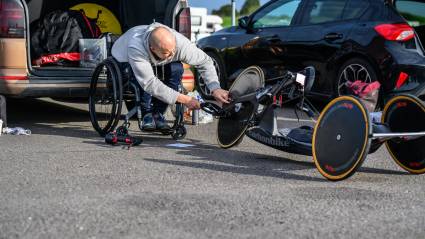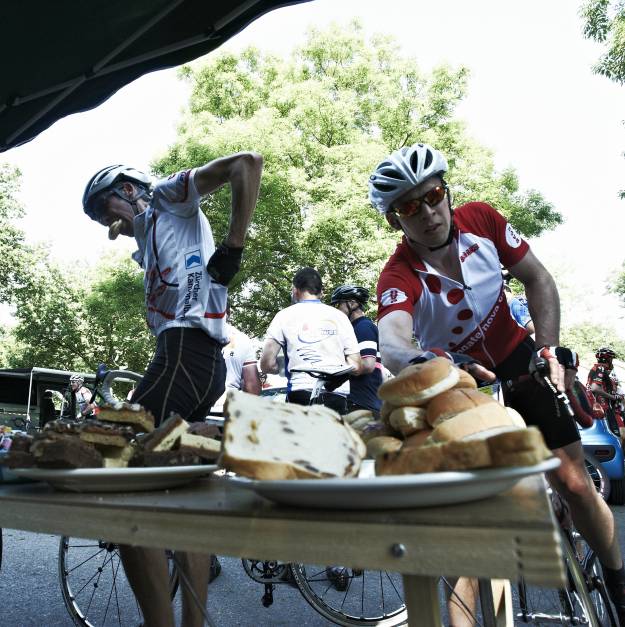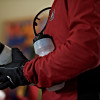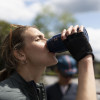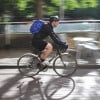Knowledge Level: Intermediate
Recover
It’s often said that it’s not the best cyclists who win Grand Tours, it’s the best recoverers. Professional cyclists take their recovery very seriously and, when not riding their bikes, avoid walking, standing and, whenever possible, are horizontal. With work and family commitments, you probably won’t be able to take quite such a zealous approach to your own recovery but there are plenty of The most important thing is to the lose the “more is more” mindset that’s so prevalent amongst amateur cyclists. If you want to improve, quality almost always trumps quantity and part of that is recovery.
Ride hard, ride easy
When the pros race and perform efforts in training, they go hard. However, when riding easy, such as a on recovery ride, it’s super easy. Many amateur riders however don’t go hard enough when they’re pushing and go too hard when they’re supposedly going easy. They end up riding the majority of their time in a one-paced physiological no-mans’ land that stimulates few gains and just tends to build fatigue. This particularly applies to that really have to be strict Zone 1 or, rather than stimulating recovery, they’ll just add fatigue.
Fuel
During a long race, pros will take advantage of every lull in the action to take on some fuel and, before the start, will have followed a tried and tested nutritional regime. Good fueling is essential, so don’t adopt a haphazard approach to it and practice it in training to find what works for you. Especially during the early stages of a race, the pros will opt for “real food”, such as filled rolls and rice cakes, it’s only when the race hots up that they’ll switch to gels. Do the same in sportives and opt for real food whenever possible as it tends to be easier on your stomach. Save gels for when you’re struggling towards the end but, if you’ve paced, fueled and trained correctly, this shouldn’t happen.
Group riding skills
Even when barreling along flat roads at over 50kph, there will be riders sat in the middle of the pro peloton who are barely having to turn a pedal. It’s having the skill and confidence to ride elbow to elbow and wheel to wheel that allows the pros to conserve valuable energy in the bunch. Working on your group riding skills, learning group etiquette and not always having your nose in the wind will improve your performance, whether racing or riding a sportive. You’ll save energy on the flat and have more in the tank to tackle climbs or to unleash a finishing sprint.
Ride as a team
Pro cycling is one of the ultimate team sports with the majority of riders on a team having no ambitions of their own to win but instead working to give their team leader the best possible chance. You probably won’t be able to find riders to sacrifice themselves for you or fetch water bottles but, if you’re riding a sportive with a group of mates, you can definitely work together for your mutual benefit. Take turns on the front and, if you know one of you is stronger, get them to put in longer pulls. Similarly, if there’s a feed station coming up, send your strongest rider down the road and get them to sort out snacks etc, minimising the time you’ll all have to stop for.
Reconnaissance
Before a major race, pros will reconnaissance key sections and also often have important details of the route, such as the location of climbs, written down and taped to their stems. If you’re riding a sportive, the more information you have about the route, the better. If it’s a really important event to you, ideally do some reconnaissance rides or use online resources to get a feel for the roads. Note down the start and end kilometres of major climbs and tape this information to your stem.
Power meters
Almost every pro rider will now train and race with a power meter. Many amateurs put off getting one as they don’t feel they’re “good enough” or aren’t “serious cyclists” but less experienced riders stand to gain the most from using one and prices are dropping all the time. You’ll potentially get more performance gains from a power meter than a set of bling wheels. They are invaluable for pacing long rides, such as sportives, and, especially if you’re tackling a mountainous route with multiple long climbs, prevent you from overcooking things early on when you’re feeling fresh. Also, if your training time is limited, a power meter will ensure you get the most out of every pedal stroke.
Training camps
It’s no co-incidence that a lot of pro riders will head to southern Europe during the winter months and even further afield, such as the Canary Islands, for a bit of warm weather training. It’s no fun battling the British winter on a bike and booking a week or two of warm weather training can give you a massive physical and mental boost.
Structured training
A essential part of every pro rider’s season is sitting down with their Directeur Sportif and coach and planning their racing and training calendar for the year ahead. Certain events will be prioritised and peaked for, others viewed more as training and they will also schedule in some down time. You should do the same and, by referring to and utilising our training plans, add structure to your own cycling year.
Playing to your strengths
Pro cycling has become increasingly specialised and long gone are the days when Grand Tour contenders would also be mixing it with Spring Classics specialists. Riders will target races that suit their strengths. Try doing the same when you’re picking your own target events for the year. If you’re a bigger rider who’s good on the flat, a mountainous event probably isn’t a great goal. Why not try one of the sportives that accompany the Spring Classics, some flat time trials or even try the track.


